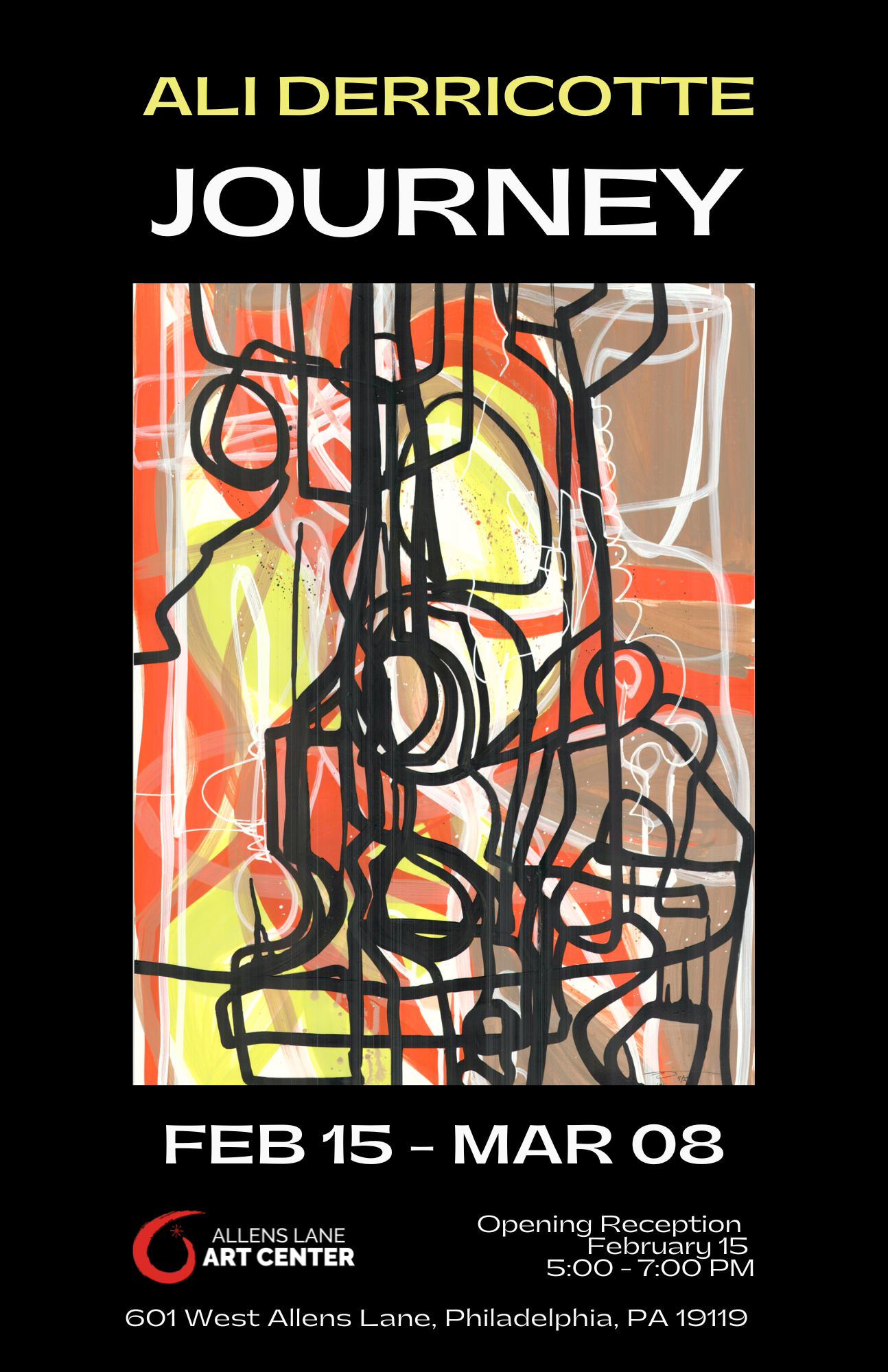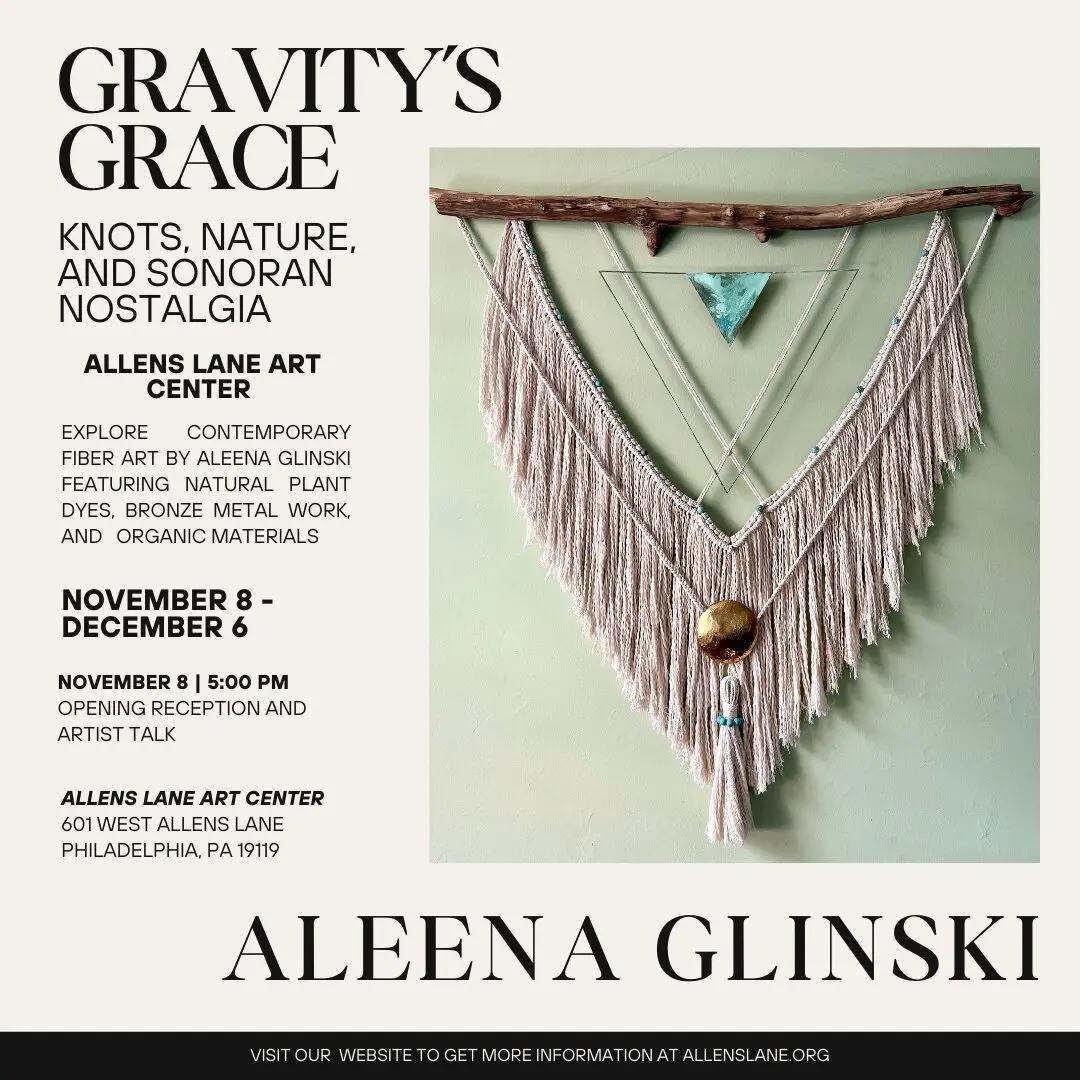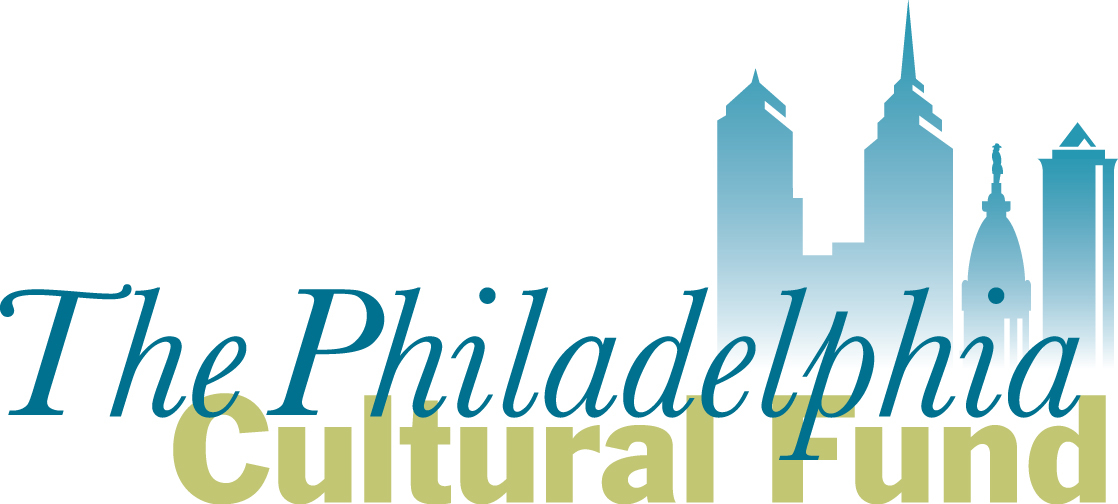Exhibitions
The Carolyn and Howard Alber Gallery at Allens Lane Art Center shows work by local artists and community partners. Gallery Hours are Monday – Thursday 10:00 am – 7:00 pm and by appointment on weekends.

Room On A Broom
Zachary Rawe and Suzanne L. Seesman
May 9 – June 8, 2025
Opening Reception: May 9, 5-7 pm
Closing Reception: June 8, 1-3 pm
Allens Lane Art Center is pleased to present the two-person exhibition by artists Suzanne L. Seesman and Zachary Rawe. Seesman presents objects that blur the line between functional and artistic objects, including aprons, drawings, videos and small casts of found objects, such as remnants of her children’s snacks. Her work both celebrates and conflates the pleasure of making and learning, while also nodding toward the often-overlooked labor behind everyday objects, transforming symbols of domesticity and maintenance into artworks. For Rawe’s part on view will be oil paintings on panels from his ‘Flowering Trashiness Studies’ series. These works fantasize a potentiality where discarded objects and blooming potential can slip together. These paintings riff with poetic phrases from Wallace Stevens and Maggie Nelson, inviting viewers to consider the relation between painting and poetry.
Zachary Rawe is a painter and occasional Adjunct Professor based in Philadelphia, PA. His practice treats painting as a field of wet inquiry where differing aesthetic and academic regimes can be clumped together with the hope to court messy dialogues and strange bedfellows. The specific works here exemplify ongoing experiments in the impossibility of the color grey, borrowed contours, and mushy language. Rawe’s writing has appeared in Title Magazine, Temporary Art Review, and at Thomas Erben Gallery, NY. Rawe’s work has been displayed in Cincinnati, OH, Chicago, IL and Philadelphia, PA. You can find his ongoing writing around art, which is accompanied with egg sandwich recipes, at his substack Egged on.
Suzanne L. Seesman is an artist and art-worker based in Philadelphia whose interdisciplinary practice is shaped by experiences in education, cooperative organizing, and the service industry. She is a past recipient of the Cloud Artist Prize and The Ilya and Emilia Kabakov Fellowship and a former member of the artist collective Vox Populi. She has been in residence at The International Ceramics Studio (ICS) in Kecskemet, Hungary, and the Vermont

Gloria Gammage Davis
Solo Exhibition
March 15th – May 4th
Opening Reception and Artist Talk moderated by Gail Lloyd: March 15, 5pm – 7pm

Ali Derricotte
Journey
February 15th – March 8th
Opening Reception: February 15, 5pm – 7pm
Allens Lane Art Center is thrilled to present the work of emerging artist Ali Derricotte in his first solo exhibition Journey. Working with intensity over the last 10 years, Derricotte has created a prolific body of work pushing the limits of abstraction in painting. Through almost a ritualistic repetition, the artist has developed a sophisticated visual language that resonates throughout the exhibition. The body of work on view in Journey is built around a striking juxtaposition between bold saturated colors, and the striking black line that winds and twists through the visual plane in meandering, intuitive, and hypnotizing patterns. “My art is a journal of the journey we take as individuals, the complexity and the decisions that we face have a multitude of outcomes. How do we find what our voice is or who we are? The art that I create highlights the journey.” Inspired by the improvisational nature and complexity of Jazz, as well as the textures and rhythms of the every day, Derricotte’s persistence and insight as a painter shine through this evocative and layered body of work.

The Rebeccah Milena Maia Blum Curatorial Fellowship Exhibition
Unearthed
January 11 – February 8
Opening Reception and Artist Talk: January 11, 5pm – 7pm
The Carolyn and Howard Alber Gallery at Allens Lane Art Center proudly presents Unearthed, a vibrant exhibition featuring the figural ceramics of three Philadelphia-based artists: June Terrell, Gail Lloyd, and Meri Adelman. Curated by Martha Knox, the exhibition will run from January 11 through February 8. The opening reception will take place on Saturday, January 11, from 5–8 PM, with a curator and artist talk scheduled from 5-6 PM.
“Unearthed” brings together the powerful artistic voices of three women, each using ceramics as a medium for storytelling, expression, and exploration. Their work reflects not only individual journeys but also the interconnectedness of a shared community. Curator Martha Knox describes discovering these artists in the Germantown and Mount Airy neighborhoods as “an exciting experience,” highlighting how their overlapping creative paths have enriched the local art scene.
June Terrell, a self-taught artist, shapes portraits from terracotta, leaving the natural clay bare to capture the raw emotions and authenticity of the human form. Her works are deeply rooted in personal and societal narratives, bringing each figure to life with subtle, thoughtful details.
Gail Lloyd, who transitioned from a career in independent film, brings a striking fusion of past and present to her ceramics. Her sculpted portraits evoke both contemporary style and ancient gravitas, creating works that feel both rooted in history and relevant today.
Meri Adelman, trained as a fine art painter, has embraced ceramics to create dreamlike figures and vessels. Through organic patterns and spontaneous drawings, Adelman’s pieces blur the lines between reality and imagination, inviting viewers into realms of mystery and interpretation.

GRAVITY’S GRACE
November 8 – December 6
Opening Reception and Artist Talk, November 8, 5 -7pm
Allens Lane Art Center is pleased to present the solo exhibition by artist Aleena Glinski, Gravity’s Grace. Glinski uses cotton rope, plant dyes, bronze, and wood in her elegantly designed fiber and mixed media artworks. Utilizing the macramé processes as the core structure of her pieces, the artist honors labor traditionally undertaken by women. Glinski also uses natural dyeing processes, typically taking up to three days to complete, resulting in exquisite color and tonal range.
Glinski spent her childhood on occupied Tohono O’Odam land presently known as Tucson, Arizona. Her practice includes the study of physics, dance, ecology, yoga, psychology, and indigenous epistemologies. Bringing these influences together, Glinski explores the symbolism of geometry and the intersection of grace and balance. She strives to create images that evoke peace, the archetypal feminine, and a sense of connectedness to the underlying fabric of the universe that weaves us together. Wondering at the mathematical spells that choreograph the mystery of the universe, the artist draws attention towards that which animates the world and promotes health and vitality for the body, the spirit, and the greater relational ecology of worlds.

Ife Nii-Owoo: The Shape of My Heart
October 5 – November 2, 2024
Opening Reception: October 5, 5-7 pm
Artist Talk: October 5, 5:00 – 5:30 pm
Allens Lane Art Center is thrilled to present the work of Ife Nii-Owoo in her solo exhibition, The Shape of My Heart. The exhibition draws heavily on recent works completed in 2023-24. These are contrasted with several earlier works, which help to tell the story of her evolving aesthetic that has developed over the last 40 years of her career.
Utilizing hand-painted and printed papers, photo transfers of family images, markings of African writing scripts, and symbolism, Nii-Owoo constructs layered, complex, and captivating works of collage, painting, and mixed media sculptures. The saturated and rich color and the carefully composed and balanced pictorial space found in her work evoke a range of emotions.
Nii-Owoo’s work is an ongoing investigation of history’s influence on our lives, the power of myth and symbol, and the complexity of family dynamics and ancestry. In 1978, during her graduate studies at the Institute of African Studies in Accra, Ghana, she began to explore and incorporate into her work various traditional African spiritual symbols and written scripts. These continue to resonate and have become a part of her works’ spiritual vocabulary.
The new pieces in the exhibition weave together grief and hope; are radiant and full of deep shadows, with forms and symbols cascading across the picture plane, at once chaotic and perfectly balanced. It is as if we are trying to hold the whole world of emotions in one gaze, creating a mesmerizing effect on the viewer. These works truly feel as the artist intended: “My work is the embodiment of joy, meditation, and prayer.”
History
In 2007, the gallery at Allens Lane Art Center was named after the late Carolyn Fiedler-Alber by her loving husband, Howard Alber. Mrs. Alber was a graduate of the Tyler School of Art and had taught in both the Philadelphia and New Jersey public school systems. She was chair of Volunteers at the Quadrangle and a member of Friends of Artists Equity. She also devoted much of her time helping people with disabilities and was involved in several AIDS organizations.
In 2012, Howard Alber passed away at the age of 101. Understanding just how important Howard was to the center, the name of the gallery was changed to honor them both. Howard was an accomplished artist and when he passed, the center put on a memorial retrospective of his works.
Both Carolyn and Howard both had an affinity for Allens Lane Art Center and were very supportive of the Center’s mission of making the arts as accessible as possible to the community. Their passion for art and life spoke volumes about the type of people they were.
Call for Artists and Curators
ALAC is looking for exhibition proposals for satellite gallery at Settlement Music School in Germantown.
Would you like to exhibit with us, or do you have an exhibition idea? Please email us at info@allenslane.org with details and some images of key works, or link to your website.


